
The interosseous talocalcaneal ligament. a Posterior view specimen with... Download Scientific
Background: Injury of the interosseous talocalcaneal ligament (ITCL) has been recognized as a cause of subtalar instability, though lack of an accepted clinical test has limited the ability of clinicians to reliably make the diagnosis.Clinical effects of ITCL failure remain unclear because of insufficient understanding of the role of the ligament.
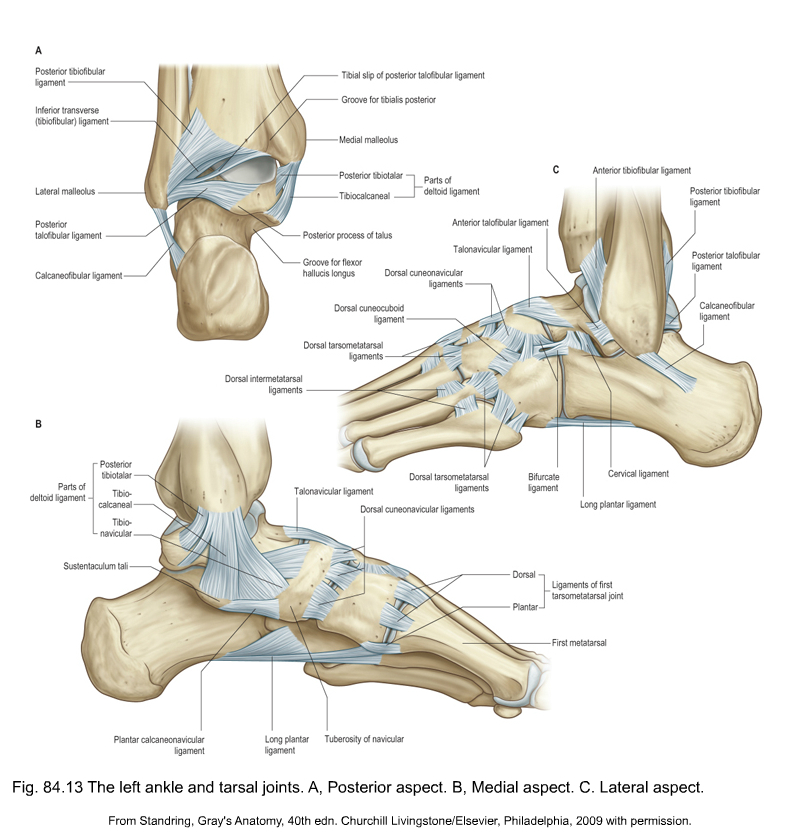
anatomy of the lower leg, ankle and foot Musculoskeletal Key
The lateral ligaments, deep deltoid ligaments, talonavicular joint capsule, and the talocalcaneal interosseous ligament (TCIL) were sequentially released and underwent cycles in midstance and heel-raise positions after each release. The talus was removed and replaced to simulate total talar implant. Lastly, TA, EHL, and EDL were sutured into.

Ankle & Foot Atlas of Anatomy Foot anatomy, Muscle anatomy, Anatomy
The interosseous talocalcaneal ligament forms the chief bond of union between the talus and calcaneus . It is a portion of the united capsules of the talocalcaneonavicular and the talocalcaneal joints, and consists of two partially united layers of fibers, one belonging to the former and the other to the latter joint.
Interosseous talocalcaneal ligament. (a) Schematic drawing of a coronal... Download Scientific
The anterior talocalcaneal ligament ( anterior calcaneo-astragaloid ligament or anterior interosseous ligament) is a ligament in the foot . The anterior talocalcaneal ligament extends from the front and lateral surface of the neck of the talus to the sinus tarsi of the calcaneus . It forms the posterior boundary of the talocalcaneonavicular joint .

Joints of the Lower Limb Ankle and Subtalar Joints Anatomy
The main stabilizing ligaments of the subtalar joint (STJ) are the cervical ligament (CL) and the interosseous talocalcaneal ligament (ITCL). The primary function of the CL is to resist excessive STJ supination whereas the ITCL remains taut during pronation. Dysfunction of either the CL or ITCL can result in subtalar instability, resulting in a.
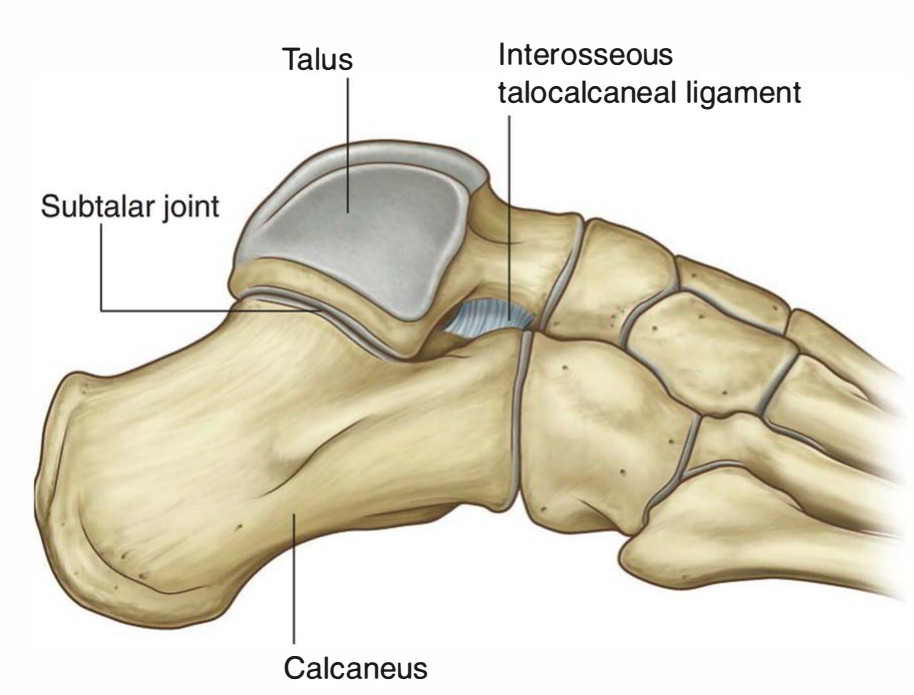
Talocalcaneal Ligament Earth's Lab
Interosseous Talocalcaneal Ligament - It takes an inferolateral course from the sulcus of the talus to the sulcus of the calcaneus. This ligament is a bilaminar, broad and flat transverse band that is associated with both the talocalcaneal and talocalcaneonavicular joints .

Structure of interosseous talocalcaneal ligament Semantic Scholar
This part (also known as the "true" joint capsule) forms the strong talocalcaneal interosseous ligament, together with the anterior part of the talocalcaneal joint capsule. The joint capsule is lined with the synovial membrane which helps to lubricate the joint to facilitate movements of the bones.

Anatomy Of The Ankle
The interosseous talocalcaneal ligament, or ligament of the tarsal canal, is medially located in the tarsal canal. The ITCL blends with the fibers of the medial root of the inferior extensor retinaculum at the origin of the calcaneus, which forms a V-shape. The ITCL has a length of 10 mm and a width of 8.5 mm.
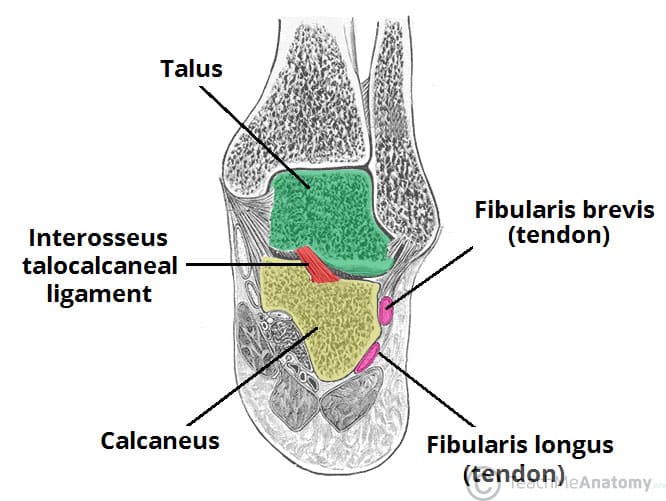
The Subtalar Joint Ligaments Neurovascular TeachMeAnatomy
The interosseous talocalcaneal ligament (ITCL) is the main soft-tissue contributor to subtalar joint stability. The role of ITCL reconstruction in retaining this stability is minimally reported. Therefore, we conducted this study to investigate the effects of rupture and reconstruction of the ITCL on the subtalar and peritalar joints.

Anatomy Of The Right Foot
Background: Injury of the interosseous talocalcaneal ligament (ITCL) has been recognized as a cause of subtalar instability, though lack of an accepted clinical test has limited the ability of clinicians to reliably make the diagnosis. Clinical effects of ITCL failure remain unclear because of insufficient understanding of the role of the ligament.
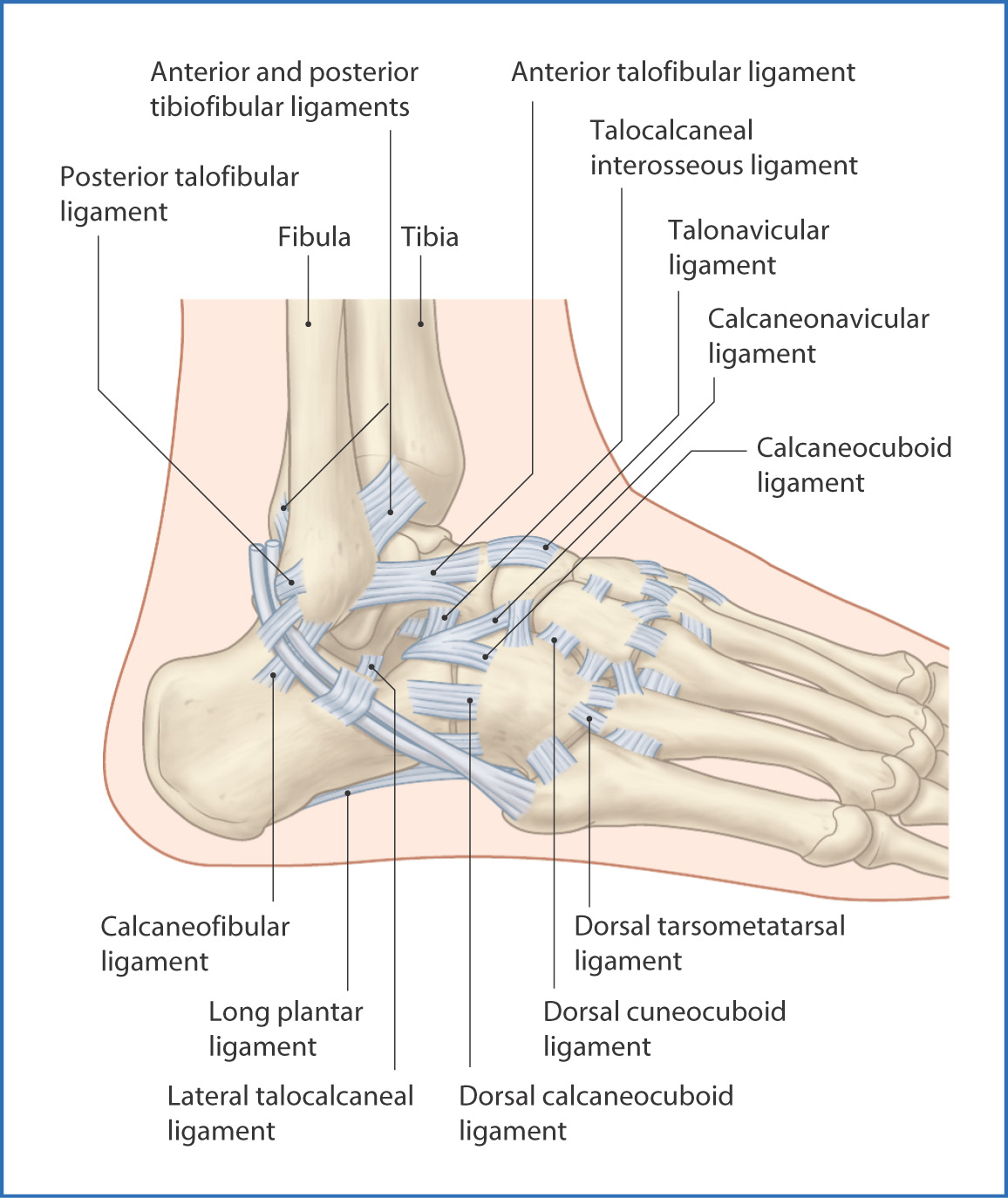
Ankle and Foot Joints Basicmedical Key
The interosseous talocalcaneal ligament forms the chief bond of union between the bones. It is, in fact, a portion of the united capsules of the talocalcaneonavicular and the talocalcaneal joints, and consists of two partially united layers of fibers, one belonging to the former and the other to the latter joint. It is attached,above, to the groove between the articular facets of the under.

(A) T1weighted MRI scan with a coronal view showing rupture of... Download Scientific Diagram
The main ligament that attaches these bones is called the interosseous talocalcaneal ligament, which runs along a groove between them. Four other weaker ligaments provide the joint with added stability. In between the calcaneus and talus is the synovial membrane. This tissue secretes fluid to lubricate the joint space, protecting the cartilage.

Anatomy & Physiology Illustration
5 Interosseous talocalcaneal ligament 6 Cervical talocalcaneal ligament Akiyama suggested that the sinus tarsi is not only a talocalcaneal joint space but a source of nociceptive and proprioceptive information on the movement of the foot and ankle and that sinus tarsi syndrome may result from disorders of nociception and proprioception in the foot.

The posterior talocalcaneal ligaments connections in two different... Download Scientific Diagram
Lateral talocalcaneal ligament An additional ligament - the interosseous talocalcaneal ligament - acts to bind the talus and calcaneus together. It lies within the sinus tarsi (a small cavity between the talus and calcaneus), and is particularly strong; providing the majority of the ligamentous stability to the joint.

Interosseous Talocalcaneal ligament Nursing School Info, Nursing Study, Body Health, Health
Subtalar joint instability is an entity commonly neglected within the scope of lateral ankle instability in patients of all ages; up to 25% of chronic ankle instabilities have associated subtalar instability [2, 24, 30], which could account for some of the cases with persistent symptoms after isolated repair or reconstruction of the anterior talo-fibular ligament [].
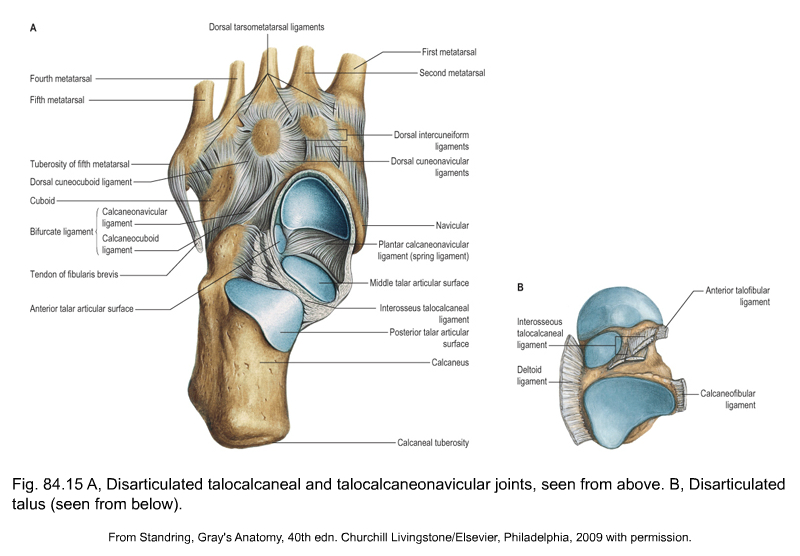
anatomy of the lower leg, ankle and foot Musculoskeletal Key
The interosseous talocalcaneal ligament is located in the sinus tarsi and is broad, flat and bilaminar. The posterior lamina of the ligament is associated with the talocalcaneal joint, and anterior lamina with the talocalcaneonavicular joint. Its medial fibers are taut in eversion. References